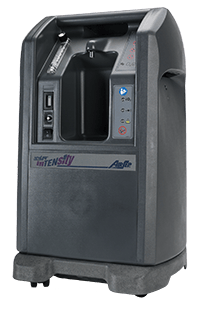
For people with hearing loss, finding the right way to improve communication and quality of life is essential. This can include using devices and technology to improve hearing, like hearing aids. While traditional hearing aids are the most common treatment option and can be very beneficial, there are alternatives that can also help people hear better in specific situations. In this article, we examine several hearing aid alternatives and their benefits and limitations in helping people with hearing loss.
Keep in mind that no consumer device can fully replace the hearing benefits provided by hearing aids. If you have hearing loss and are considering using a device other than hearing aids, you should always consult with your audiologist.
Assistive listening devices (ALDs)
“Assistive listening device” (ALD) is a general term for a product or technology other than hearing aids that enhances a person’s ability to hear sound. Though “assistive listening device” and “assistive listening system” (ALS) are sometimes used interchangeably, ALDs typically refer to devices that make one-to-one conversation or communicating in small settings easier while ALSs are for public spaces (more on ALSs below).
Assisted listening devices can include remote microphones, Bluetooth streaming devices, and personal sound amplification products (PSAPs), like these Pocketalker devices from Williams Sound. A user’s conversation partner speaks into the microphone, and their speech is amplified in headphones that the user wears. The device has tone and volume controls so the user can adjust the sound to their liking and needs.
While these devices can be helpful, they are not tailored to a specific user’s hearing loss and therefore are not a replacement for hearing aids. The FDA states that PSAPs “are intended for people with normal hearing to amplify sounds in certain situations” rather than for people with hearing loss. They are considered consumer products rather than medical devices.
Keep in mind that since the term “assistive listening device” is very general, many other devices, including some of the options listed below, might fall under the umbrella of assistive listening devices.
Assistive listening systems (ALSs)
Assistive listening systems (ALSs) help people in public places hear sound being amplified via a public address system. They may be used in movie theaters, concert halls, airports, and other public spaces with sound systems or amplified announcements. Using different technologies, such as radio frequency, hearing loop systems, or infrared systems, ALSs deliver sound directly to the listener. The sound can be delivered to hearing aids or cochlear implants or to external units supplied by the venue.
These devices are typically small box-shaped wireless receivers with headphones that receive sound directly from the venue’s sound system. They can greatly improve the listening experience for people with hearing loss, as users get clear sound directly from the venue’s sound system. Some use signal processing technology to manipulate sound waves to reduce background noise, enhance speech sounds, improve sound clarity, and otherwise optimize sound. (This is often a feature of modern hearing aids as well.)
Note, however, that the sound is not tailored to a specific person’s hearing loss. While these external units can be helpful, if you need hearing aids, it is best to use your own personal hearing aids with the ALS.
Amplified telephones
Amplified telephones are just as the name suggests: They help people with hearing loss hear better on the phone by amplifying the sound. Some models have the amplification built into the phone itself, so all you have to do is push a button to turn on the amplification feature. You can also purchase external amplifiers for corded phones. The phone’s headset plugs into the amplifier, which then plugs into the phone base. Most amplified telephones have tone and volume controls so the user can adjust the sound as needed.
These systems are not a substitute for hearing aids set specifically to your prescription. Most modern hearing aids have Bluetooth, which allows sound from a Bluetooth-enabled telephone to stream directly into the hearing aid. Alternatively, some hearing aids have telecoils that can receive sound directly from a telephone or an ALS. Either of these methods will provide sound directly to your hearing aid that is tailored to your specific hearing loss.
However, some people with hearing aids still choose to use amplified telephones, as it can be easier to adjust the tone and volume on a telephone than to fiddle with one’s hearing aid settings during a phone call. This allows you to have both the benefit of sound tailored to your hearing loss and easy-to-adjust controls on the phone itself.
Bone-conduction headphones
Bone-conduction headphones are hearing devices that send sound signals as vibrations in the bones of your skull rather than down your ear canal. These headphones rest on your skull just in front of your ear rather than being placed in or on the ear as with earbuds or regular headphones.
In normal hearing, the outer ear collects sound waves and sends them down the ear canal to the eardrum, which sends sound vibrations to the middle and inner ear, which then transmits signals to the auditory nerve. Bone-conduction headphones bypass the outer and middle ear, sending sound vibrations through your skull to the inner ear.
Runners and cyclists often use these headphones to listen to music without covering their ears, allowing them to better hear environmental sounds around them and stay safer. However, if you have hearing loss due to damage to your outer or middle ear (possibly due to an ear infection, earwax, a hole in the eardrum, or damaged middle ear bones), you might find that bone-conduction headphones help you hear a bit better.
There are also specific bone-conduction hearing aids intended for these situations. These devices are more powerful than bone-conduction headphones designed for consumer use and will be set specifically to fit your hearing loss.
People with outer or middle ear damage should see an ear, nose, and throat (ENT) doctor to ensure that their condition cannot be treated with surgery or medications. Some diseases of the middle ear can, in rare cases, lead to life-threatening complications. Do not delay proper evaluation and treatment.
Wireless earbuds with hearing features
Some newer wireless earbuds now come with special hearing features for people with mild to moderate hearing loss. These devices look just like regular earbuds but have technology similar to that of hearing aids, such as digital signal processing to manipulate and optimize sound waves. Many work with smartphone apps that let you take a simple hearing test and create sound settings tailored to your hearing needs.
These special earbuds have several benefits: They don’t look like medical devices, they cost less than traditional hearing aids, and you can use them for both music and hearing assistance. Many have features like microphones that focus on the person directly in front of you and technology that reduces background noise.
Keep in mind that these earbuds aren’t checked or approved by the FDA as hearing devices. They don’t amplify and clarify sound as effectively as prescription hearing aids, and they aren’t set up by hearing professionals. If you have more serious hearing loss, regular hearing aids fitted by a professional will work much better for you.
Cochlear implants
Cochlear implants are special medical devices for people with very severe hearing loss who get little or no help from regular hearing aids. Unlike the other devices we’ve mentioned, these devices are surgically placed under the skin and work by sending signals directly to the auditory nerve, bypassing the damaged parts of the ear.
The biggest advantage of cochlear implants is that they can provide sound for people whose hearing aids don’t work anymore. Many people who get cochlear implants find they can understand conversations better, hear important sounds around them, and enjoy a better quality of life.
To get a cochlear implant, you need to be evaluated by hearing specialists and ear surgeons. The results are different for each person and depend on factors like how long you’ve had hearing loss and how committed you are to therapy afterward. While they do require surgery, maintenance, and regular practice with hearing therapists, cochlear implants can completely change life for the better for people who qualify.
Behavioral adjustments for better hearing
Simple changes in your daily life can help you hear better without any devices. Sitting in quieter spots at restaurants, making sure rooms are well lit so you can see faces clearly, and turning down the TV at home can all make conversation easier if you have mild hearing problems. Communication tricks like facing the person who’s talking, asking people to repeat things when needed, and letting others know about your hearing challenges can also make a big difference.
Learning basic lipreading skills can greatly improve your understanding in many situations. While it takes practice, watching a speaker’s lips and facial expressions provides visual clues that complement what you hear. Learning sign language might be helpful for those with profound hearing loss who regularly communicate with others who know or are willing to learn sign language.
These adjustments won’t replace proper treatment when you need medical help, but they can improve other solutions. Many people find that using these approaches along with the right hearing technology works best. Even people who wear hearing aids can benefit from these simple changes to get the most from their hearing.
Consult with your audiologist and specialists about hearing aid alternatives
It’s essential to see a hearing professional before using any nonprescribed hearing product or hearing aid alternative. These experts can test your hearing to find out what kind and how much hearing loss you have, which helps determine which solutions will work for you.
Audiologists can also suggest room modifications that improve acoustics in your home or workplace. Simple changes like adding soft furnishings or sound-absorbing panels can help reduce background noise and improve communication.
Hearing specialists can guide you through all the options available today, from simple amplifiers to hearing aids to surgically implanted devices. They can also spot medical problems that might need treatment from an ear doctor rather than just amplification.
While there are many alternatives to traditional hearing aids, working with qualified professionals ensures you get the right care for your specific needs. Most hearing specialists offer appointments to discuss your options, even if you’re not ready for hearing aids yet.








